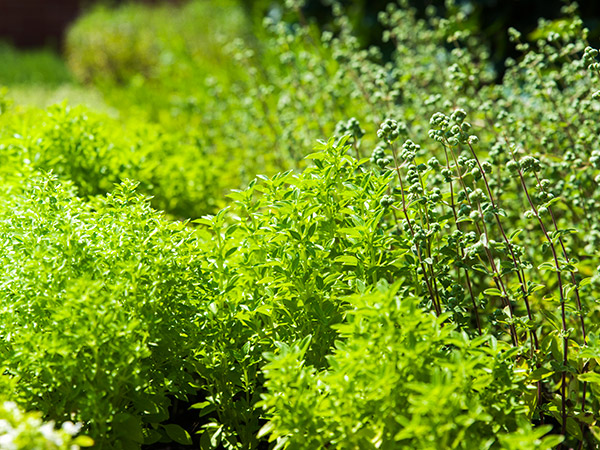
Continue to harvest herbs to use fresh, and dry or freeze them in small batches in an ice cube tray. Pinch off developing flowers to retain essential oils and flavor in the plants’ foliage.
Monitor tomatoes during hot weather. Tomatoes appreciate an even supply of moisture rather than a heavy soaking and then a drought. Straw mulch is helpful in these beds.
Many hot-weather-loving veggies, such as peppers, tomatoes, eggplants, and cucumbers, might be delayed in fruit production due to a cool, wet spring. Side-dress these vegetables with a nitrogen fertilizer, taking care not to spread it on the plants’ foliage. Water in well.
Monitor vegetables for symptoms of fungus or blight: soft, darkened areas; yellow and dropping leaves; or sunken dark spots on otherwise green foliage.
Harvest onions and garlic as they are ready, and begin the drying process.
Seeds for fall crops may be sown toward the end of the month. These include beans, broccoli, spinach, cool-season lettuce crops, and cabbages.
Monitor all plants for insects. The return of sunny, hot weather will bring a bumper crop of insects. Hand-remove large insects such as tomato hornworms and other caterpillars.
Caterpillars on fennel, dill, and carrots might likely be those of swallowtail butterflies, which lay their eggs on these favorite host plants. Consider planting a special herb crop just for them next year.
Monitor apples during late July when apple maggots are laying their eggs. Visit Plant Information for current control methods. Some gardeners place red decoy apples in trees to trap these pests. When the insect count reaches a high level, control steps are then taken.
Espaliered fruit trees should be pruned for the second time once their spring flush of growth is over. The first pruning is done in late winter when plants are dormant.


